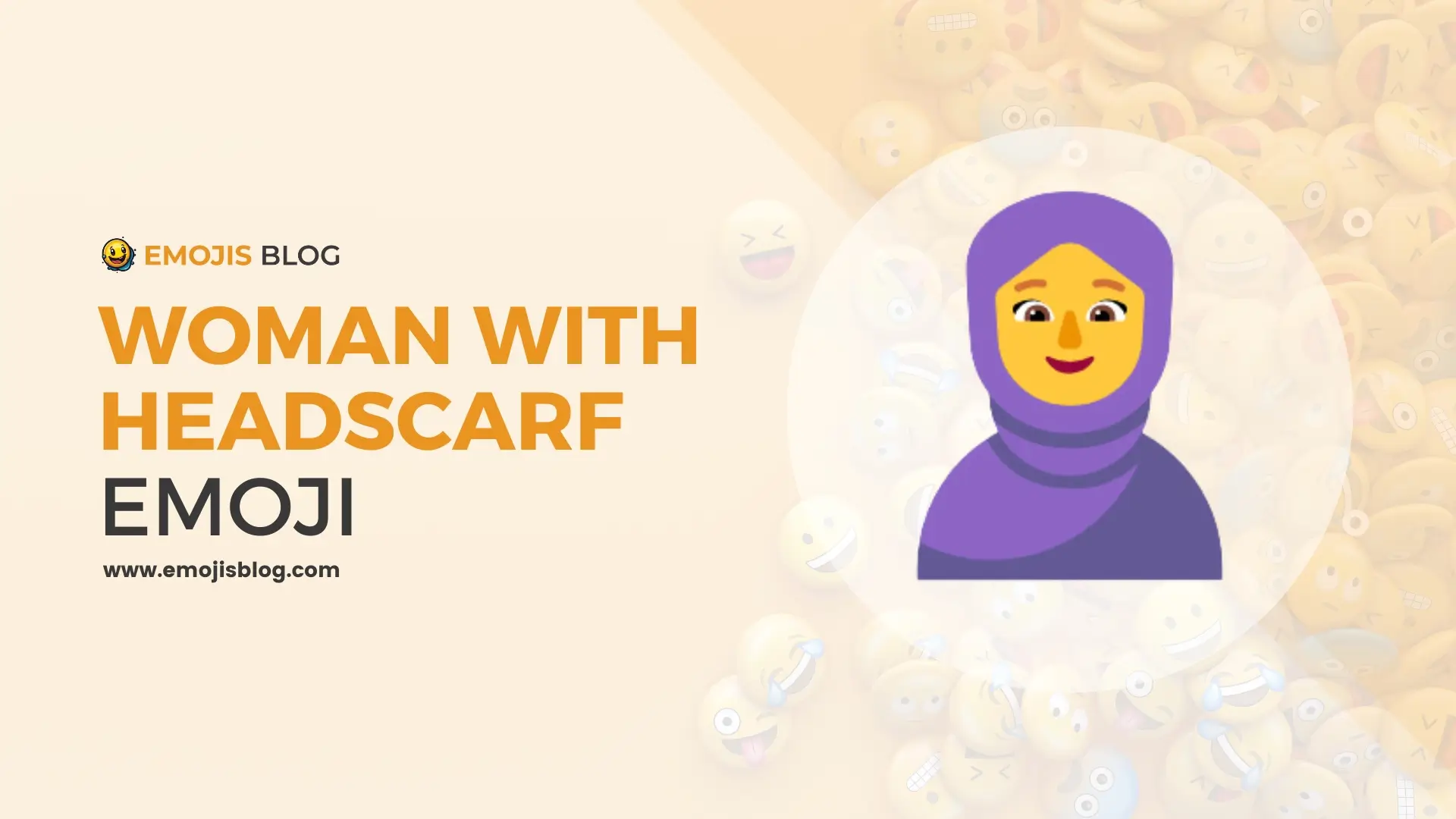What Does The Woman With Headscarf Emoji Mean 🧕
🧕
Woman With Headscarf Emoji Meanings 🧕
The woman with headscarf emoji 🧕 represents a woman wearing a headscarf, commonly associated with Muslim women and the practice of wearing a hijab. It symbolizes modesty, privacy, and cultural identity within Islamic tradition, while also reflecting the diverse use of headscarves across various cultures and religions. Introduced in 2017, the emoji serves as a digital representation of inclusion and diversity, empowering those who identify with it and challenging stereotypes. It is used to express religious identity, cultural pride, and even fashion preferences, highlighting its multifaceted significance in modern communication.
Technical Information
| Field | Information |
|---|---|
| Unicode Name | Woman with Headscarf |
| Unicode | U+1F9D5 |
| Introduced in | Unicode 10.0 |
| Year Added | 2017 |
| Emoji Version | 5.0 |
| Codepoint | U+1F9D5 |
| Shortcode | :woman_with_headscarf: |
| Category | People & Body |
| Subcategory | Person-Fantasy |
| Keywords | headscarf, hijab, woman |
| Variations | Skin tone modifiers available |
| Presentation | Emoji style (colored) |
| Common Platforms | Apple, Google, Microsoft, Samsung, WhatsApp, Twitter, Facebook |
| Related Emojis | 👳♀️ Woman Wearing Turban, 👩 Woman, 🧔 Person with Beard |
What Does The Woman With Headscarf Emoji Mean 🧕?
The woman with headscarf emoji 🧕 is a symbol that represents a woman wearing a headscarf. This emoji is significant in various cultural, social, and religious contexts. Understanding its meaning and usage can provide insights into its importance in digital communication.
Historical and Cultural Background
The headscarf, also known as a hijab, has been worn by women for centuries across different cultures and religions. While commonly associated with Muslim women, headscarves are also worn by women of other faiths and traditions, including Christianity, Judaism, and Hinduism.
Islamic Tradition
In Islam, the hijab is worn as a sign of modesty and privacy. It is an important aspect of a Muslim woman’s identity and faith. The headscarf serves not only as a religious symbol but also as a cultural one, representing a woman’s adherence to Islamic guidelines for dress and behavior.
Other Cultural Significance
In addition to its religious connotations, the headscarf has been a part of traditional attire in many cultures. For instance, in Eastern Europe, South Asia, and parts of Africa, headscarves are worn for various reasons, including protection from the sun, cultural customs, and fashion.
Introduction of the Emoji
The woman with headscarf emoji was introduced in 2017 as part of Unicode 10.0. It was a significant addition to the emoji lexicon, reflecting the diversity and inclusivity of digital communication. The introduction of this emoji was largely driven by the efforts of Rayouf Alhumedhi, a teenager who saw the need for better representation of Muslim women in emoji form.
Symbolism and Usage
The 🧕 emoji is used in various contexts to convey different meanings. Here are some of the common uses:
Religious Identity
Many people use the emoji to represent a Muslim woman or to express their own religious identity. It can be a way for Muslim women to celebrate their faith and share their cultural pride on social media and other digital platforms.
Cultural Representation
Beyond its religious significance, the emoji can be used to highlight cultural diversity. It serves as a reminder of the variety of traditions and practices around the world, promoting inclusivity and understanding.
Fashion and Style
The headscarf is also a fashion statement. The emoji can be used to showcase different styles of wearing a headscarf or to discuss fashion trends related to head coverings.
Social and Political Impact
The addition of the woman with headscarf emoji has had social and political implications. It has been a step towards better representation of Muslim women in the digital world, providing them with a symbol that resonates with their identity.
Empowerment
For many Muslim women, the emoji is a source of empowerment. It allows them to see themselves represented in a medium that is widely used for communication. This representation can foster a sense of inclusion and acceptance.
Challenging Stereotypes
The emoji also plays a role in challenging stereotypes and misconceptions about Muslim women. By normalizing the presence of a headscarf in digital communication, it helps to combat prejudice and promotes a more nuanced understanding of different cultures and religions.
Conclusion
The woman with headscarf emoji 🧕 is more than just a digital icon; it is a powerful symbol of religious, cultural, and social significance. Its introduction into the emoji lexicon has enriched digital communication, providing representation and fostering inclusivity. As the digital world continues to evolve, the inclusion of diverse symbols like the woman with headscarf emoji will play an important role in promoting understanding and acceptance across different cultures and communities.

